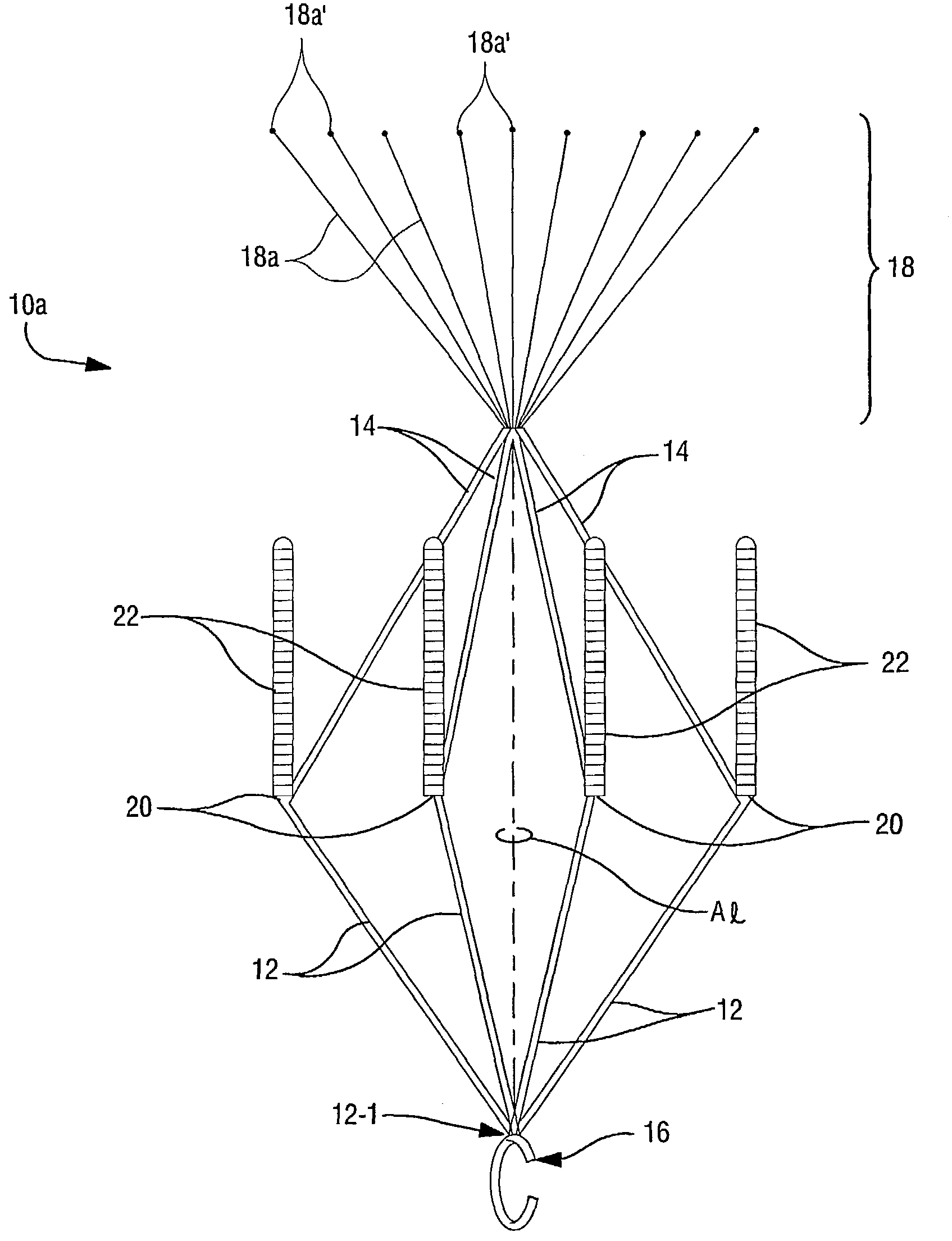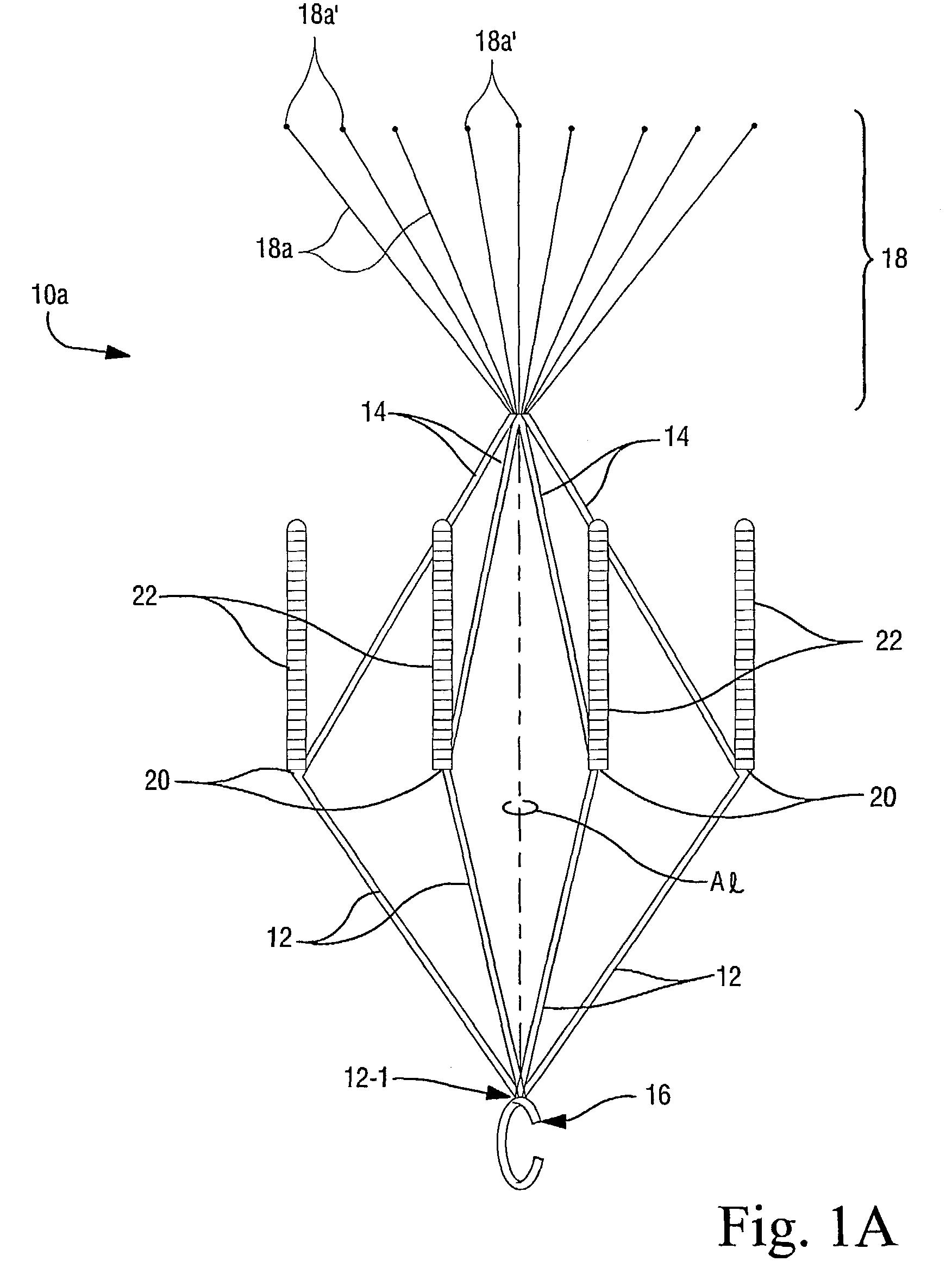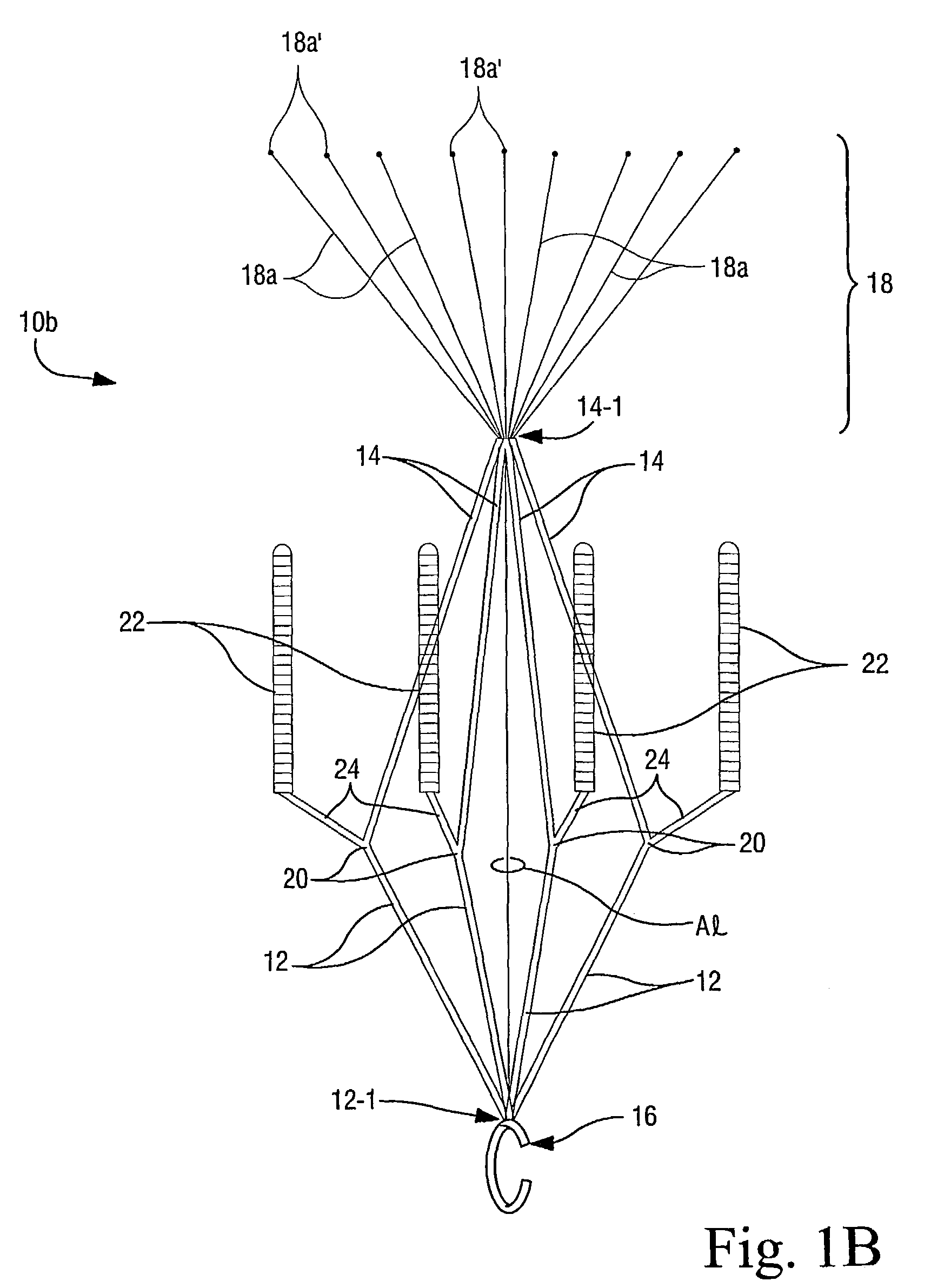Temporary vascular filters
a filter and vascular technology, applied in the field of vascular filters, can solve the problems of inconvenient use of permanent filter devices, inconvenient removal of current filter devices, and patient risk of pulmonary embolism, so as to achieve easy or safe removal, reduce risk, and easy
- Summary
- Abstract
- Description
- Claims
- Application Information
AI Technical Summary
Benefits of technology
Problems solved by technology
Method used
Image
Examples
Embodiment Construction
[0019]Preferred vascular filters 10a, 10b in accordance with the present invention are shown in accompanying FIGS. 1A and 1B, respectively, as including paired proximal and distal support arm portions 12, 14 which, in the expanded configuration shown in FIGS. 1A and 1B, radiate divergently from the elongate axis Al of the filters 10a, 10b. The angle between these proximal and distal support arm portions 12, 14 is most preferably about 135°+ / − when the filter 10a, 10b is in its expanded configuration. As will be discussed in greater detail below, a hook 16 is provided at the proximal juncture 12-1 of the proximal support arm portions 12, 14.
[0020]The blood filter devices 10 of this invention are provided with a distal blood-filtering portion 18. More specifically, the distal juncture 14-1 of the distal support arm portions 14 is most preferably attached to the proximal end of a plurality of filter arms (a few if which are identified by reference numeral 18a in FIGS. 1A and 1B). These...
PUM
| Property | Measurement | Unit |
|---|---|---|
| Length | aaaaa | aaaaa |
| Hydrolysable | aaaaa | aaaaa |
| Bioabsorbable | aaaaa | aaaaa |
Abstract
Description
Claims
Application Information
 Login to View More
Login to View More - R&D
- Intellectual Property
- Life Sciences
- Materials
- Tech Scout
- Unparalleled Data Quality
- Higher Quality Content
- 60% Fewer Hallucinations
Browse by: Latest US Patents, China's latest patents, Technical Efficacy Thesaurus, Application Domain, Technology Topic, Popular Technical Reports.
© 2025 PatSnap. All rights reserved.Legal|Privacy policy|Modern Slavery Act Transparency Statement|Sitemap|About US| Contact US: help@patsnap.com



